Plan A Memorable Camping and Trekking Adventure in Mongolia
Mongolia, with its vast wilderness and rich nomadic traditions, is an ideal setting for trekkers and campers seeking adventure. This guide provides essential insights into preparing for and undertaking a trek in Mongolia’s spectacular landscapes—from securing permits to engaging with local cultures. As you navigate through rugged terrains like the Altai Mountains and the Gobi Desert, this journey not only challenges but also connects you deeply with the natural and cultural tapestry of Mongolia. Let's explore with Tweet Tours as every step reveals the beauty of a land that remains untouched by time.
Mongolia
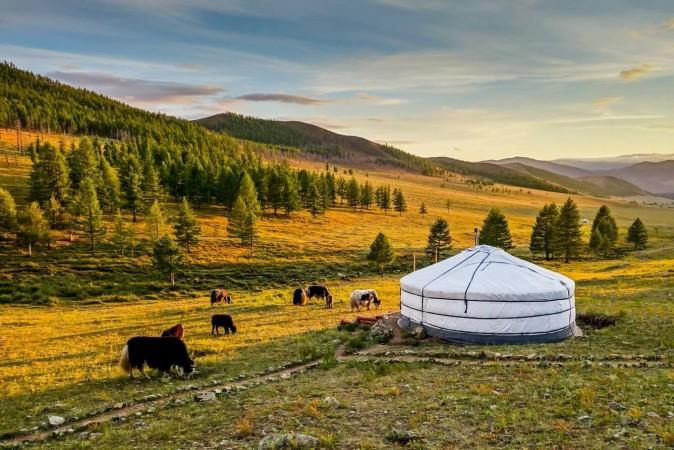
Ultimate Guide to the Most Memorable Trekking Tour in Mongolia
1. Best Trekking Trails for Visitors
Mongolia offers a variety of trekking trails that cater to all levels of experience and adventure. Each of these trails provides a unique perspective on Mongolia’s vast landscapes and rich cultural heritage. Whether you are looking for high-altitude challenges, family-friendly hikes, or insights into local wildlife and nomadic cultures, Mongolia’s trekking trails deliver memorable experiences.
- Altai Tavan Bogd National Park: This trail takes you through the Altai Mountains system of Central Asia, extending approximately 1,200 miles (2,000 kilometers) in a southeast-northwest direction from the Gobi Desert. The trek typically lasts about five days and offers encounters with glaciers, turquoise lakes, and ancient petroglyphs. This remote area provides not only a physical challenge but also a deep dive into Mongolia’s natural beauty, so it is recommended to trek here with a guide.
- Khustain Nuruu National Park: Known for the successful reintroduction of the wild Przewalski's horses, this area provides a gentler trekking option suitable for families and less experienced trekkers. The trails here offer a mix of moderate hikes and opportunities to witness unique wildlife, all within a few hours' drive from Ulaanbaatar.
- Eagle Valley (Yolyn Am): Nestled in the Gobi Desert, Eagle Valley is famed for its deep ice field, which persists well into summer. The trek through this narrow canyon is relatively easy, making it ideal for a day trip. The valley is also home to diverse fauna, including the indigenous Siberian ibex and golden eagles.
- The Gobi Desert Edges: Trekking the fringes of the Gobi Desert presents a unique challenge with its vast, arid landscapes contrasted by occasional lush oases. This trek is for the more adventurous, offering stark landscapes and the chance to visit remote nomadic families, providing a glimpse into the traditional Mongolian way of life.
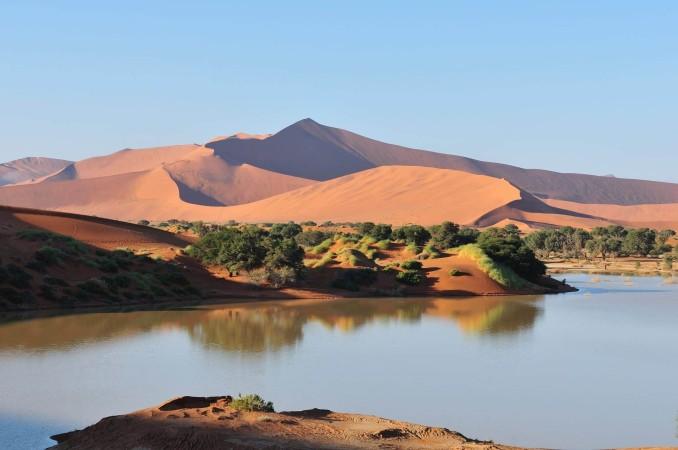
Oasis in the desert - © GroblerduPreez
2. Best Time of the Year for a Great Trekking Experience
The best times to embark on a trekking adventure in Mongolia are during the late spring and early autumn months. Specifically, May through June and September through October are ideal.
- Late Spring (May - June): During these months, the weather is comfortably warm with an average temperature ranging from 20 to 25 degrees Celsius (68 to 77 degrees Fahrenheit). The landscape bursts with vibrant colors, making it a visually stunning time for trekking. This period avoids the summer rains, ensuring trails are more accessible and less muddy.
- Early Autumn (September - October): This season mirrors spring in terms of temperature and overall trekking conditions. The added advantage is the dramatic autumn foliage, which paints the vast steppes and mountainous regions in brilliant shades of yellow, orange, and red. Additionally, autumn is typically drier, offering clear, crisp days ideal for hiking.
Both seasons offer balanced conditions—not too hot and not too cold—with minimal precipitation, making them the best times for trekkers to experience Mongolia’s natural beauty comfortably and safely. These times also coincide with off-peak travel periods, ensuring fewer crowds and a more intimate connection with nature and local culture.
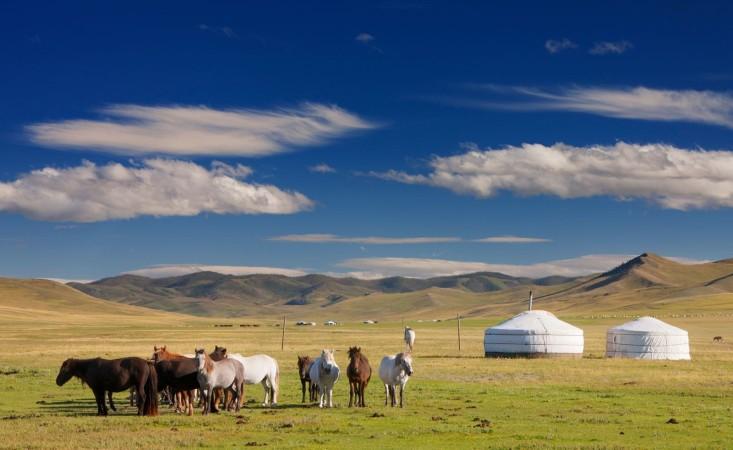
Mongolian steppes - © Britannica
3. What to Prepare for a Memorable Trekking Adventure in Mongolia?
Preparing for a trekking trip in Mongolia involves careful planning to ensure you have the necessary equipment and knowledge for a safe and enjoyable experience. By focusing on these essential preparations, you'll be well-equipped to handle the diverse conditions Mongolia offers and enjoy a memorable trekking adventure.
- Durable Footwear: Invest in high-quality hiking boots that are well-broken-in to prevent blisters.
- Layered Clothing: Weather in Mongolia can change rapidly; pack lightweight, warm layers that can be easily adjusted.
- Camping Supplies: Include a sturdy tent, a sleeping bag rated for sub-zero temperatures, and a portable stove in case you need to rest along the way.
- Visa and Permits: Ensure your passport is valid for at least six months beyond your travel dates. Most visitors need a visa, and trekkers should obtain special permits for certain protected areas.
- Local Maps and Navigation Tools: Carry detailed maps of the area and consider a GPS device or a reliable navigation app.
- First Aid Kit: Pack a comprehensive first aid kit, including items for blisters, minor injuries, and altitude sickness.
- Water Treatment: Bring methods to purify water, such as tablets or a water filter, as you’ll often be sourcing water from streams.
- Local Customs and Language: Learn basic Mongolian phrases and understand local customs to enhance interactions with native communities.
- Physical Condition: Start an exercise regimen several months in advance to strengthen your stamina and endurance for long treks.
>>>During your stay in Mongolia: A Traveler's Guide To The Top Must-Visit Places In Mongolia
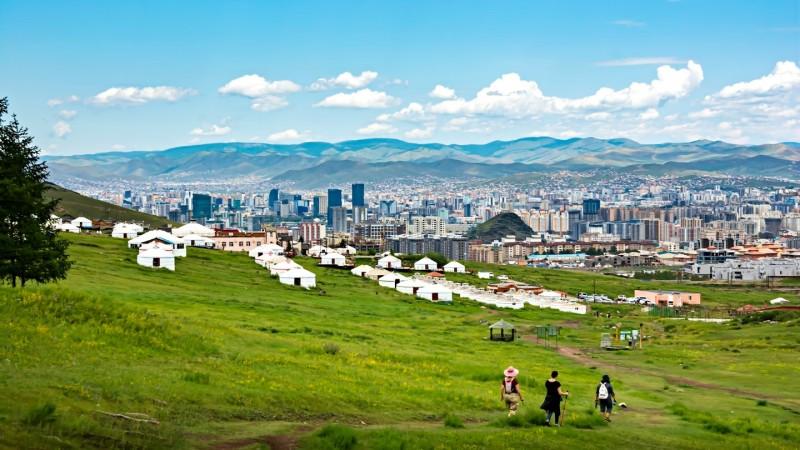
Ulaanbaatar capital of Mongolia - © Kriangkrai Thitimakorn
How to get the Best Camping Trip in Mongolia
1. Best Camping Destination to Observe the Natural Beauty of Mongolia
Mongolia boasts some of the world's most pristine camping destinations, offering unforgettable experiences in vast, untouched landscapes. These destinations not only highlight Mongolia’s diverse ecosystems but also provide campers with a unique opportunity to explore the country’s natural and cultural riches in depth. Each site offers a different aspect of Mongolia’s outdoor and historical legacy, ensuring campers can find a location that suits their adventure spirit.
- Altai Tavan Bogd National Park: Set in the far west, this park features several of Mongolia's highest peaks and glaciers. Campers can enjoy breathtaking views of mountainous terrain and clear starlit skies, ideal for those seeking solitude and a rugged outdoor experience.
- Khovsgol Lake: Known as the "Blue Pearl of Mongolia," Khovsgol Lake is surrounded by dense pine forests and high mountains. It's perfect for campers who also enjoy kayaking and fishing. The area provides a serene environment to reconnect with nature.
- Gorkhi-Terelj National Park: Easily accessible from Ulaanbaatar, this park offers a mix of rugged rock formations and tranquil meadows. Camping here often includes horseback riding and hiking, making it a versatile spot for both relaxation and adventure.
- Orkhon Valley: The Orkhon Valley is steeped in history and natural beauty. Campers here can explore ancient archaeological sites and enjoy the lush riverside scenery, ideal for a more cultural and scenic camping experience.
- Elsen Tasarkhai Sand Dunes: The Mongol Els sand dunes, located 280 kilometers west of Ulaanbaatar, stretch 80 kilometers long and 5 kilometers wide. This area offers a diverse and picturesque mix of steppe, mountains, forests, and desert.
- Bayanzag Cliffs “The Flaming Cliffs”: Deep in the Gobi Desert, the area is renowned for its fossil discoveries. The striking red sand cliffs appear to burn at sunset. Nearby, a Saxaul tree forest features the region's characteristic deep-rooted trees.
- Tsagaan Suvraga: Located about 400 kilometers south of Ulaanbaatar, this impressive rock formation features cliffs that are 30 meters high and 100 meters long. From a distance, they resemble the ruins of an ancient city. Nearby attractions include the Khevtee Bosoo Agui Cave and Bronze Age rock paintings.
- Khongoryn Els: At the base of the Altai Mountains, the "singing" sand dunes cover several square kilometers and reach up to 80 meters in height. These dunes, reminiscent of those in Egypt, emit unique sounds when the wind moves the sand, giving them their name.
>>>Read more: Discover The Beauty Of Mongolia: A Journey To Khuvsgul Lake
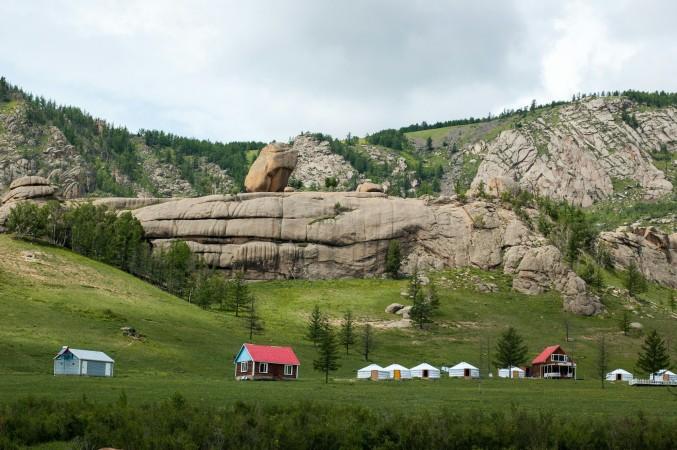
Yurt camp site - © heckepics
2. What to Pack for Camping in Mongolia?
Preparing for camping in Mongolia requires consideration of the unique environment and climate. By preparing these items, you ensure a safe, comfortable, and environmentally responsible camping experience in Mongolia’s great outdoors. This preparation not only protects you but also the natural beauty of the camping sites.
- High-Quality Tent: Choose a wind-resistant tent with a waterproof rating suitable for Mongolia’s varied climates.
- Sleeping Bag: Opt for a sleeping bag that can handle sub-zero temperatures, especially if camping in the highlands or during the shoulder seasons.
- Cooking Equipment: A reliable, portable stove and fuel are necessary, as wood is scarce in many parts of Mongolia.
- Layered Clothing: Pack thermal layers, a fleece, and a durable outer shell to protect against wind and rain. Include a hat and gloves for colder nights.
- Sun Protection: High-altitude sun is harsh; bring sunglasses, sunscreen, and a brimmed hat.
- Navigation Tools: Maps and GPS device is a must in order to have a safe camping in the wilderness of Mongolia. Detailed topographic maps and a GPS device are crucial for navigating the remote areas of Mongolia.
- First Aid Kit: Include items tailored to handle common outdoor injuries and any personal medications.
- Emergency Beacon or Satellite Phone: Essential for emergency communication in Mongolia’s remote regions.
- Trash Bags: Always pack out what you bring in, as many areas lack disposal facilities.
- Water Purification: Streams and lakes may be your primary water sources, so bring purification tablets or a filter.
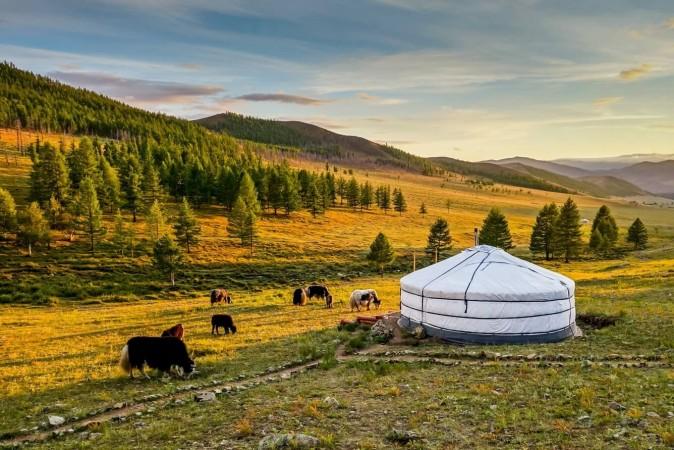
Yurt camp among Mongolian nature - © U.S Department of State
Frequent Questions About Camping in Mongolia
When planning a camping trip to Mongolia, there are several key considerations to keep in mind:
- Best Time of Year to Camp: The best times to camp in Mongolia are late spring (May to June) and early autumn (September to October) due to mild temperatures and minimal rainfall.
- Permits: Many protected areas and national parks require permits. Always check local regulations and obtain the necessary permits in advance. Contacting our Call Center can provide detailed information on legal documentation required.
- Wildlife Encounters: Depending on the region, you might encounter gazelles, wolves, marmots, and various bird species. Always maintain a safe distance and secure your food properly.
- Safety of Solo Camping: While Mongolia is generally safe for solo travelers, remote camping requires careful planning. Inform someone of your itinerary and consider carrying a satellite phone or emergency beacon.
- Water Access: Natural sources like rivers and lakes are common, but always purify water using filters or tablets to avoid contamination.
- Camping Locations: Mongolia offers extensive freedom for campers, but always respect private land and protected areas. Look for designated camping spots or seek local advice.
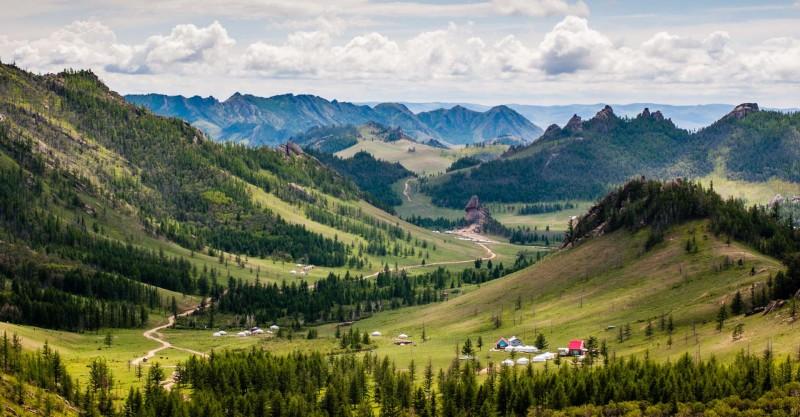
Gorkhi Terelj National Park - © jaturunp
Conclusion
Exploring Mongolia through trekking and camping offers a unique opportunity to connect with the country's stunning natural beauty and rich cultural heritage. By preparing adequately and respecting the local environment and traditions, you can ensure a safe and memorable adventure in this remarkable land. Join Tweet Tours for an unforgettable experience, and let us guide you through Mongolia’s most breathtaking landscapes, where every step reveals the timeless beauty of this extraordinary destination.
Articles for you

Experience Aboard The RV Indochine II - A Mekong Cruise With Tweet World Travel
The RV Indochine II is a luxury river cruise ship, offering an unforgettable journey through many attractions along the Mekong River. Built in 2017, this upscale vessel combines colonial elegance with modern conveniences to create a comfortable yet stylish environment for its crew and passengers. The ship’s intimate size makes it ideal for those seeking a more personal cruising experience while exploring Vietnam and Cambodia rich culture, scenery, and heritage. Whether you're gazing at the landscape from your private balcony or enjoying authentic local cuisine, RV Indochine II promises an exotic adventure like no other.

Witness Stilt Fishing In Sri Lanka: An Eco-Tourism Experience
Sri Lanka, renowned for its stunning beaches and rich cultural heritage, harbors a unique tradition that has captivated travelers for centuries: stilt fishing. This ancient practice, passed down through generations of coastal communities, blends artistry with necessity, offering a glimpse into a way of life intimately connected to the island's coastal rhythms. Stilt fishing in Sri Lanka isn't merely a means to catch fish; it's a cultural emblem, embodying the resilience and ingenuity of Sri Lanka's fishing communities.

Make Your Trip Stress-Free With The Tweet Trip App
Embark on your next adventure with confidence by downloading the Tweet Trip App, available for both iOS and Android. This essential travel companion allows you to view your detailed itinerary, stay connected with your tour guide and fellow travelers, receive real-time updates, and provide feedback effortlessly. With features like in-app messaging, emergency assistance, and location sharing, the Tweet Trip App ensures you travel smarter, stay connected, and enjoy a seamless, worry-free journey. Get started today and make the most of your travel experience with Tweet World Travel.

Pedal Through Paradise: Unveiling Cambodia's Hidden Gems on Two Wheels
The gentle whir of bicycle wheels mingles with the distant chants of monks as you glide past emerald rice paddies stretching to the horizon. This is Cambodia - a sensory explosion waiting to be experienced on two wheels. At Tweet Tours, we believe there's no better way to immerse yourself in the Kingdom of Wonder than by bicycle.
Cambodia isn't just a destination; it's a living, breathing tapestry of ancient wonders, natural beauty, and vibrant culture. Our carefully crafted cycling tours take you beyond the typical tourist haunts, offering a unique perspective on this captivating country. Ready to clip in and discover the magic of Cambodia? Let's ride!

Trekking in the Himalayas: A Journey Through Nepal's Majestic Peaks
The Himalayas rise from the earth like colossal guardians, their snow-capped peaks piercing the sky in a display of nature's raw power and beauty. Nepal, nestled at the heart of this mountain range, serves as the gateway to some of the most breathtaking trekking experiences on the planet. Here, the air is crisp and thin, filled with the promise of adventure and the whispers of ancient tales.
With Tweet Tours, as you set foot on these hallowed trails, you're not just a traveler - you're a modern-day explorer, following in the footsteps of legendary mountaineers and age-old traders. Each step takes you further into a world where nature reigns supreme and human resilience is tested against the backdrop of some of the world's highest peaks.
From the moment your boots touch the ground in Kathmandu, you'll feel the pull of the mountains. The bustling streets of the capital, with their sensory overload of sights, sounds, and smells, soon give way to serene mountain paths where the only soundtrack is the crunch of gravel underfoot and the distant tinkling of yak bells.

Exploring Mui Ne's Wonders: Unique Attractions & Local Dishes
Nestled along the southeastern coast of Vietnam, Mui Ne emerges as a captivating gem, blending natural wonders with cultural richness. Renowned for its stunning landscapes and unique attractions, Mui Ne beckons travelers seeking both relaxation and adventure in equal measure. Mui Ne's renowned beach dunes, bustling fishing towns, and excellent local food await exploration at every turn.
The allure of Mui Ne lies not only in its pristine beaches and crystal-clear waters but also in its diverse range of activities catering to every traveler's whims. Whether you're drawn to thrilling water sports like kitesurfing and windsurfing on its dynamic shores or seeking tranquility amidst the picturesque Fairy Stream, Mui Ne promises an unforgettable journey filled with discovery.
